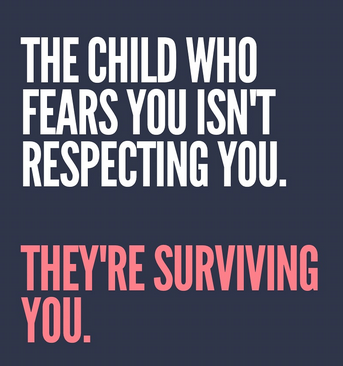The child who fears you isn’t respecting you. They’re surviving you.No child should ever have to fear speaking up for their own safety — not in t
The child who fears you isn’t respecting you.
They’re surviving you.
No child should ever have to fear speaking up for their own safety — not in the home, not at church, not in locker rooms, not on sports teams, and not in restrooms.
Children can learn to respect safe and compassionate adult authority without fear.
Fear silences.
Safety teaches.
🌿 1. Fear and Safety Cannot Live Together
A fearful child is not learning right from wrong.
They’re learning which adults might hurt them.
Children who fear adults or other children often hide pain, confusion, or danger.
They don’t speak up — not because they don’t want to, but because they don’t feel safe to.
When a child is afraid, every moment becomes a calculation for survival:
“Will I get in trouble if I tell?”
“Will they believe me?”
“Will someone be mad?”
That’s not respect — that’s distress.
🌸 2. Respect Grows in Safe Soil
Real respect blooms in homes, schools, and communities where children know:
They can ask questions without being punished.
Adults listen, even when the conversation is uncomfortable.
Honesty won’t cost them love or belonging.
Boundaries are honored — not mocked or dismissed.
When children experience adults who respond with calm and care, they grow confident enough to tell the truth.
That is the kind of respect that protects them for life.
🕊️ 3. Healing Takes Time — and Patience
Even in strong families and communities, children face challenges.
Systems may help, but healing is not instant.
Children — and the adults who care for them — often face:
Long waits for services
Inconsistent help
Rude or dismissive professionals
Financial or insurance barriers
That’s why safe adults matter so much.
Sometimes the most powerful help is a listening ear, steady patience, and quiet belief in a child’s truth.
🌼 4. Faith, Family, and Friendship — All Can Be Safe
Not every faith group or family is equipped for trauma, but every one of us can learn.
Safety begins with presence:
We listen more than we lecture.
We believe before we analyze.
We protect before we explain.
Some children lean on their faith for comfort.
Others turn inward or to trusted friends.
Wherever they reach — let’s make sure it’s safe there.
💬 For Reflection
When a child in your care is afraid, do you respond with calm or control?
Are you a person a child could tell anything to — even something hard?
How can you show children that safety and respect go hand in hand?